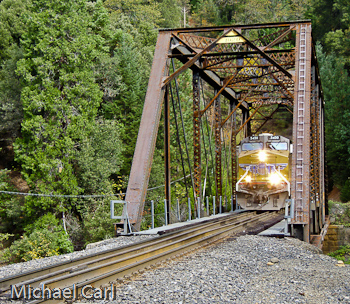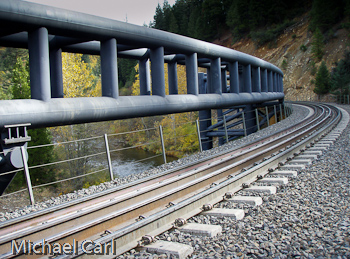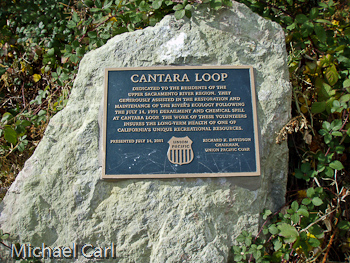The Ecological Angler
ecoangler.com
Cantara Spill on the Upper Sacramento - 20 Years Later

The narrow road leading to the Cantara Loop looked calm and deserted. Leaves and pine needles blanketed the road. Slate-gray clouds moved just over the tops of the trees lining the canyon. The road dropped down to a day-use area along the Upper Sacramento River where I parked my truck. A message board had a small poster stating "No Fires" stapled on it. As a defiant gesture, some fool burned off the top of the wooden board. I assembled my fishing rod, fastened the shoulder-strap of my waders and put on my vest. The temperature dropped from the night before. The skies wanted to snow but could only drop sleet. The sleet came down hard and fast.
I fished a short distance downstream where the Cantara Bridge stood below me. Some twenty years before, the scene where a railroad tanker spilled. On July 14, 1991, a lethal concentration of metam sodium pesticide poured into the Sacramento River above the resort town of Dunsmuir. As the poison flowed 35 miles downstream to Lake Shasta, a healthy, wild river became life-less. Lights out. Dead.

The sleet continued in bursts as I hiked up the riverbank to the bridge. I wanted to stand at "ground-zero." I avoid looking when passing an accident, but I wanted to stop and look here. I stood on the bridge as clear water passed underneath me. Since the spill, the bridge has been reengineered with a gigantic steel bumper. The bumper looked massive enough to hold several loaded rail-cars from tipping over as the bridge curved over the river. If nothing else, the railroad company engineered a sense of safety here.
I picked up my fishing rod and walked off the bridge. I followed the trail along an access road and came upon a marker off to the side. On a boulder, Union Pacific glued a bronze plaque. I'll attempt to sum it up. It basically thanked the local community for its help in restoring the river. The plaque served as tribute to their hard work and maybe even hinted at their tolerance. The plaque lacked any hints of an apology from the railroad exec who signed it.

Twenty years have passed since the accident. Thorny vines of a brier have grown thick on the boulder with the bronze plaque. Life appears to have rebounded for this stretch of water. But the toxic spill has left a scar. The towns of Dunsmuir and Mount Shasta suffered while the poison worked its way out of their popular local river. Some businesses shuttered and haven't returned. Likewise, some aquatic species have not grown to numbers seen before the spill.
There is much to celebrate in the recovery of life on the Upper Sac and the best way to honor the hard work and tolerance of those impacted by the spill is to learn from it. Our history serves up important lessons on a regular basis, and a small bronze plaque won't be enough to light the way. Some ten days short of the Cantara disaster's twentieth anniversary, a massive spill of crude oil happens on the Yellowstone River. Exxon's decision to build an unprotected crude pipeline only 5 to 8 feet below a flood prone river does not honor the 20 years of hard work, tolerance and recovery on the Upper Sacramento.
Let's insist the Exxon pipeline to be built stronger and at a much safer 25 feet below this dynamic riverbed and the safety regulators to do the job of protecting our natural resources. This incident will not be the final treat faced by the mighty Yellowstone River. The proposed Keystone XL Pipeline, if approved by the U.S. State Department, would cross the Yellowstone and Missouri Rivers on its way from Canada to Houston. The Keystone XL will be nine times the size of the Exxon pipeline with far worse impacts should there be a spill.
For natural treasures like the Sacramento and Yellowstone rivers, the future holds only more risk. Pipelines and rails will be built and maintained at the least cost to shareholders. And when the engineering comes up short, the caddis flies will stop flying above these rivers and the wild trout will not be seen busting the surface in search of a meal.